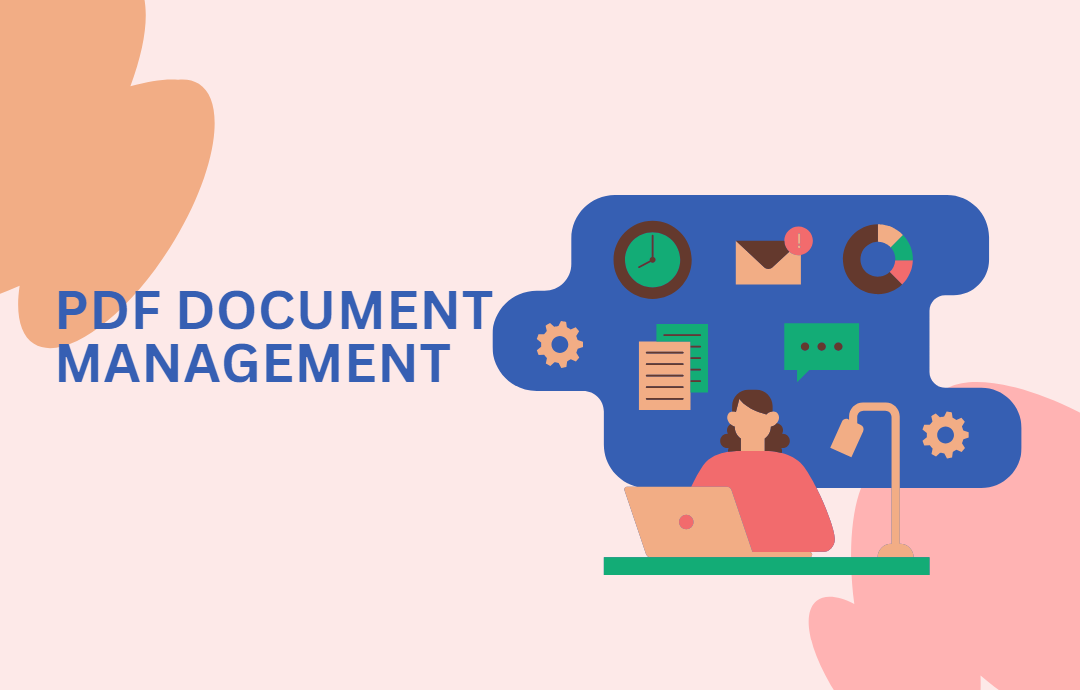Nowadays, document management is essential for virtually every company. With modern businesses increasingly relying on paperless digital documents like PDFs, implementing the right technological tools is critical for efficient, effective communication, alignment, and operational continuity.
In this piece, we will explore five distinct types of software solutions that can assist you in intelligently managing your documents and data to facilitate tremendous success for your business.

Preparing to Adopt New Document Management Solutions
Before utilizing new document management systems at your business, it's essential to acknowledge and address common problems.
● Guided Onboarding
User adoption issues are common when seeking to leverage new technologies. Change resistance and employee skill gaps can hinder attempts to switch to more modern document management solutions, even leading to complete user abandonment in some cases. For this reason, it is essential to have comprehensive onboarding measures in place beforehand.
An effective way to tackle these issues is to leverage a digital adoption platform or DAP. These platforms are designed to overlay on other software tools and provide real-time contextual guidance to individual users. By putting a DAP in place before transitioning to new document management tools, you can minimize resistance and help them achieve proficiency quickly to start streamlining immediately.
There are various DAPs on the market today, each with its nuances, so it's worth investigating each's different features and capabilities to find what fits your organization's needs. An excellent place to start is by comparing market-leading DAPs, Whatfix vs. WalkMe.
● Thoughtful Integration
The other primary consideration will be integration. As many document management tools now leverage AI, it is essential to ensure that existing documents are properly migrated during the transition to maintain data integrity and avoid issues with regulation compliance. The key to success here is a comprehensive integration strategy for new technologies.
The first step is to assess new PDF and document management tools to ensure that they are compatible with the infrastructure and workflows already in place at your business. This will enable you to identify and prevent potential conflicts during the integration process.
Additionally, you should engage in validation processes to ensure proper data migration and utilize parallel testing to check that new document management systems are working as they should.
By approaching integration in this way, you can address potential issues early on to facilitate a smooth transition to new document management solutions.
Innovative PDF and Document Management Solutions
Once you've done your due diligence to ensure successful integration and adoption, you can implement new technologies to optimize your document management processes. The following are some of the most powerful solutions available at the moment.
1. Dedicated PDF Editing and Management Platforms
First and foremost, any organization that works with digital documents needs an effective tool for modifying, annotating, and organizing PDFs, and dedicated PDF editing platforms like SwifDoo PDF are indispensable
for this purpose.
A PDF editing and management platform can empower your organization's members to work efficiently with PDFs while also ensuring the integrity of documents by providing convenient features such as form creation, image manipulation, text editing, and more.
SwifDoo's platform, in particular, distinguishes itself with its intuitive interface and advanced functionalities. Users can benefit from integrated PDF document annotation and cloud access and leverage AI for translation, proofreading, and intelligent document analysis, which can convert disorganized information into a concise, understandable format to expedite document processing.
By implementing a comprehensive PDF editing and management platform, you can streamline your business's document revision processes for more efficient and effective document management.
2. Document Sharing and Collaboration Platforms
Documents like PDF sharing and collaboration platforms offer fantastic utility to any business, especially those relying on remote work and asynchronous communication. They can enable multiple users to work with PDF documents and collaborate easily, which can be particularly useful for cross-team document management processes.
These platforms offer secure environments for sharing and modifying documents, boasting convenient features such as version control and file syncing. These enable teams to work seamlessly together and clearly clarify document status.
Document sharing and collaboration platforms can enhance efficiency and productivity and streamline document management processes by offering centralized storage and facilitating intuitive collaboration.
3. Workflow Management Platforms
One of the biggest challenges of document management is handling workflows effectively. Many processes comprise document management, from approvals to reviews, revisions, and archiving, and inefficiencies can waste valuable time and resources. Workflow management platforms, however, can alleviate this issue.
Implementing a workflow management platform allows you to define workflows to automate repetitive document-centric processes and reduce the need for manual intervention. This saves considerable time that can be better spent on more critical tasks.
Moreover, these platforms can used to enforce the implementation of standardized procedures to ensure that document management optimization doesn't come at the cost of consistency.
4. Record Management Systems
As we've touched on, compliance is a significant consideration in document management, and record retention plays a big part in that. Ensuring that PDF documents are correctly classified and stored can be a painstaking process at times, but record management systems can make these kinds of processes much more straightforward.
Record management systems boast a wide variety of features, including access controls, retention policies, audit trails, compliance reporting, and more, to ensure that documents are appropriately indexed and stored.
This helps streamline document management while maintaining document security and integrity, facilitating more effective and efficient document management for your organization.
5. Enterprise Content Management (ECM) Systems
With a constantly growing volume of digital documents, it's advisable to have a system for managing your PDF content and ensuring it is readily accessible. Enterprise content management (ECM) systems can do exactly that.
ECM systems offer many valuable features, including document capture and storage, metadata management, and robust search capabilities, to name just a few. They provide centralized hubs for PDFs and other types of digital documents, consolidating various management, retention, and compliance processes to optimize document management.
Moreover, ECMs are highly scalable, meaning they can help you cope with increasing demands in document management while maintaining operational efficiency.
Conclusion
As we are in an increasingly paperless age, digital documents reign supreme. This is especially true in business, as digital documents like PDFs are considerably more accessible, shareable, adaptable, and cost-effective than the alternative. As your business grows, however, digital document management can quickly become an overwhelming prospect due to the high volume of items being handled, so it makes sense to leverage advanced tools to your advantage to streamline things.
Once you have a comprehensive integration strategy and a practical onboarding framework, you can begin implementing the latest and greatest document management tools to optimize your business's handling of PDFs and other types of digital documents. Doing so can save you precious time and resources and help your business achieve its organizational goals with newfound velocity.










